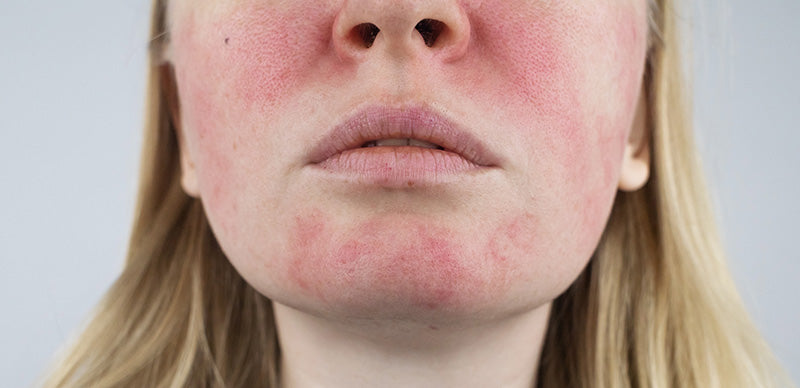If you've ever experienced persistent redness on your face, accompanied by visible blood vessels and the occasional outbreak of red bumps, you might be dealing with rosacea. In this comprehensive guide for beginners, we'll delve into the nuances of this skin condition, exploring its causes, symptoms, and effective management strategies.
What is Rosacea?
Rosacea is a chronic skin condition that primarily affects the face. It often starts subtly, with a tendency to blush easily. Over time, the condition can progress, leading to persistent redness, visible blood vessels, and even acne-like breakouts. While the exact cause of rosacea remains elusive, factors such as genetics, environmental triggers, and an overactive immune system are believed to play a role.
Identifying Rosacea Symptoms
Recognising the symptoms of rosacea is crucial for early intervention. Common signs include:
1. Facial Redness
The hallmark symptom of rosacea is persistent facial redness, typically in the central areas like the nose, cheeks, forehead, and chin.
2. Visible Blood Vessels
As the condition advances, small blood vessels may become visible on the skin, contributing to a web-like pattern known as telangiectasia.
3. Bumps and Pimples
Rosacea can mimic acne, with red bumps and pus-filled pimples appearing on the face, often mistaken for traditional acne.
4. Eye Irritation
Ocular rosacea is a subtype that involves red, dry, and irritated eyes. This can lead to a gritty sensation and, if left untreated, may result in vision problems.
Understanding Triggers
Identifying and avoiding triggers is crucial in managing rosacea. While triggers vary from person to person, common culprits include:
5. Sun Exposure
Excessive exposure to sunlight is a major trigger for rosacea. It's essential to use sunscreen with a high SPF and practice sun-protective measures.
6. Spicy Foods and Alcohol
Certain foods, especially spicy dishes, and alcoholic beverages can induce flare-ups. Maintaining a food diary can help identify personal triggers.
7. Temperature Extremes
Extreme temperatures, whether hot or cold, can exacerbate rosacea symptoms. Protect your face in extreme weather conditions.
8. Stress Management
Stress is a known trigger for many skin conditions, including rosacea. Incorporating stress-reducing activities like yoga or meditation can be beneficial.
Effective Management Strategies
9. Gentle Skincare Routine
A gentle skincare routine is paramount for individuals with rosacea. Use mild, fragrance-free products and avoid harsh exfoliants that can aggravate the skin.
10. Medical Treatments
For more severe cases, medical interventions may be necessary. Dermatologists may prescribe topical or oral medications to manage symptoms and reduce inflammation.
Conclusion
In conclusion, understanding rosacea is the first step towards effective management. By recognising symptoms, identifying triggers, and adopting a tailored skincare routine, individuals can gain control over this chronic skin condition. Remember, what works for one person may not work for another, so patience and persistence are key in the journey to clearer, calmer skin. If you suspect you have rosacea, consult with a dermatologist for personalised guidance on managing and treating this condition.
